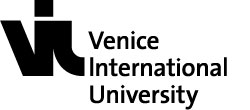S2205 Intercultural Communication
Professors
Schedule
Course description
In superdiverse societies, communication involves a variety of complex intercultural, multilingual and multimodal codes. The course will first present the key concepts in the domain of intercultural communication: what is culture? What is communication? What are norms and codes? How is culture communicated? How are intercultural norms constructed, shared and reproduced? Interactive working sessions will examine in detail culture as enacted in day-to-day communication settings (‘culture-embodied-in-communication’). The course will then focus on intercultural communication in a globalized world: What is culture-communication in a globalized world? Are there universals in communication? How is face-to-face communication realized in intercultural contexts? Why are language and negotiation essential dimensions of interpersonal relationships and meaning making?
Accordingly, the course will cover the following topics:
- The role of context: what are situational constraints on communication?
- The role of identity: who is doing what in terms of communication?
- The role of face threatening practices: what is politeness and impoliteness?
- The role of dynamic body language: what is the role of gesture, gaze, voice?
- The role of static features: what is posture and look?
- The role of affect in communication: what is empathy, charisma, aggressiveness, alignment in public and private contexts?
Learning outcomes
In this course the students will acquire and/or improve their knowledge and awareness of the role of language in intercultural communication. They will be able to identify differences as well as universals in various multicultural and multilingual contexts. The students will thereby increase their competences and skills in terms of intercultural communication. In particular, the students will:
- Learn to read and discuss texts on intercultural communication.
- Learn to transcribe complex multimodal intercultural data and analyze it.
- Learn to identify critical incidents and misunderstandings due to cultural patterns in multicultural settings.
- Learn to formulate strategies and negotiation skills in multicultural social contexts.
Teaching approach
The sessions will be structured around the discussion of seminal essays anchored to subtopics. Students will be expected to read each essay in preparation for the respective session. The discussion will include the students’ own experiences and intuitions concerning intercultural and multilingual contexts.
We will focus together on “what is happening here and now” in the class room interaction. Interactive working sessions in the classroom will then represent a means of becoming reflexive in intercultural communication. We will foster active participation via comparison and debate exploiting the multicultural composition of the class.
Evaluation method
The students’ grade will be composed of:
- Class participation (20%): presence and engagement in group discussions.
- Class exercises (25%) on the basis of a selection and transcription of data.
- Report (25 %): 1 to 2 readings per session and 1 oral presentation, or summary of the arguments of 1 session (in small groups of 2 -3 students)
- Final essay (30%) on a subtopic addressed during the seminar.
A mid-term grade will be communicated to the SHSS office based on class participation and exercises.
Bibliography
ATHIQUE, A. (2016). Transnational Audiences. Cambridge. Polity Press.
ANGOURI, J. (2014). Multilingualism in the workplace: Languages practices in multilingual contexts. Multilingua 33 (1-2): 1-9.
BRATT PAULSTON, C., KIESLING S., RANGEL S. E. (2014). The Handbook of Intercultural Discourse and Communication. Oxford. Wiley Blackwell.
BLOMMAERT J., B. RAMPTON & M. SPOTTI (2013). Language and Superdiversities. Diversities vol. 13 n°2: 1-82.
BLYTH C. & A. DALOLA (2016). Translingualism as an Open Educational Language Practice: Raising Critical Language Awareness on Facebook. Alsic vol 19.
BLYTH C. (2015). Exploring the complex nature of language and culture through intercultural dialogue. The case of Cultura. In Koike D.A & C. Blyth (eds). Dialogue in Multilingual and Multimodal Communities (pp. 139-165). London. John Benjamins.
CAMENER R & J. MAEDER (2017). A-Z of Intercultural Communication. Brighton. Academic Study Kit.
FLUBACHER M.-C., R. CORAY & A. DUCHÊNE (2016). Language, integration, and investment: The regulation of diversity in the context of unemployment. Multilingua : 1-21.
KOIKE D.A. & C. BLYTH (2016). A metadialogic approach to intercultural dialogue. Uncovering hidden motivations. Language and Dialogue 6 (2): 223-253.
LUGINBÜHL MARTIN (2015). Genre profiles as intermediate analytical level for cultural genre analysis. In Artemeva N. & A. Freedman (eds). Trends and Traditions in Genre Studies. Inkshed. Winnipeg: 225-250.
MARTIN J. & T. NAKAYAMA (2010). Intercultural Communication in Contexts. Boston. McGraw-Hill.
PILLER I. (2017). Intercultural Communication. A critical introduction. Edinburgh, Edinburgh University Press.
THURLOW C. & A. JAWORSKI (2011). Banal globalization? Embodied actions and mediated practices in tourists’ online photo sharing. In Thurlow C. & K. Mroczek (Eds.). Digital Discourse: Language in New Media (pp. 220-250). Oxford: Oxford University Press.
YANAPRASART P. (2016). Managing Language Diversity in the Workplace: Between ‘One Language Fits All’ and ‘Multilingual Model in Action’. Universal Journal of Management Vol. 4(3): 91-107.




















